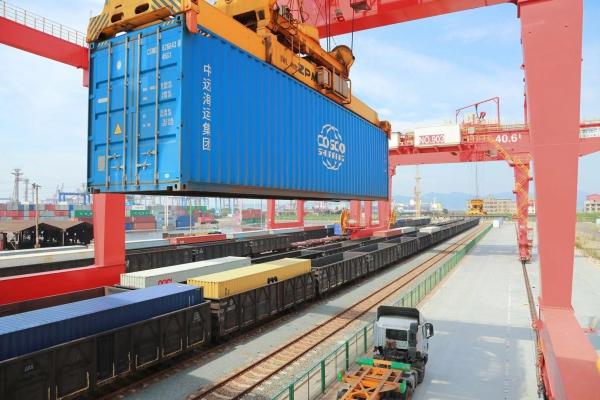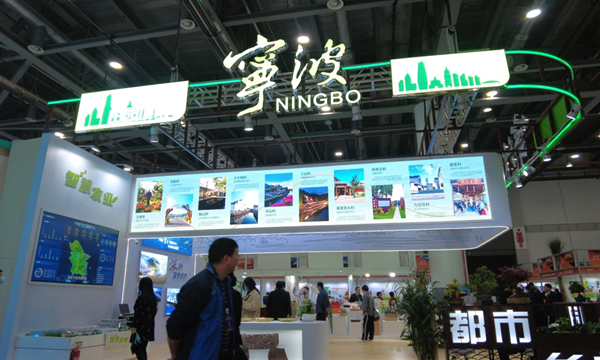Ningbo ranks 3rd nationwide in rail-sea intermodal transportation

The Ningbo-Zhoushan Port [Photo/zj.zjol.com]
Ningbo-Zhoushan Port hit 600,000 twenty-foot equivalent units (TEUs) in cargo throughput via rail-sea intermodal transportation in 2018, up 50 percent year-on-year, local media reported.
It makes Ningbo the third largest city in China in such cargo throughput, after Qingdao in East China's Shandong province and Yingkou in Northeast China's Liaoning province.
The port has been committed to its rail-sea intermodal transportation development this year, with nine additional train routes opened.
In addition, seven of its train routes boast a monthly cargo throughput of more than 5,000 TEUs, among which the one connecting Yiwu, Zhejiang province, hits 100,000 TEUs a month, ranking 1st nationwide in TEU throughput via rail-sea intermodal transportation.
The port handled a total of around 1.8 million TEUs over the past decade, with an average annual growth of nearly 92 percent. Its rail-sea intermodal transportation business now covers 15 domestic provinces and 46 cities, with 15 land ports and 12 train routes in operation.
The rapid growth can be attributed to the vigorous efforts of Ningbo in tapping the market of rail-sea intermodal transportation. The city has signed cooperative agreements with many cities in this regard, such as Nanchang, Chengdu, Hefei and Xi'an.
As an efficient, convenient and environment-friendly transportation mode, rail-sea intermodal transportation plays a key role in increasing the city's involvement in the Belt and Road Initiative.
"We will keep improving the port's TEU transport network by opening new train routes and enhance its rail-sea intermodal transportation," said He Haixing, vice director of the business department of Ningbo-Zhoushan Port.

 Delivering a high-quality lifestyle
Delivering a high-quality lifestyle  Frenchman's freight forwarding business in Ningbo
Frenchman's freight forwarding business in Ningbo  Chinese traditional architectural craftsmanship for timber-framed structures
Chinese traditional architectural craftsmanship for timber-framed structures 


